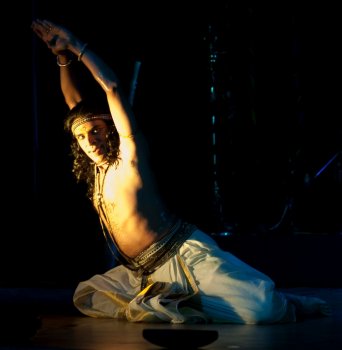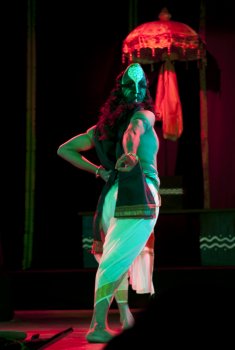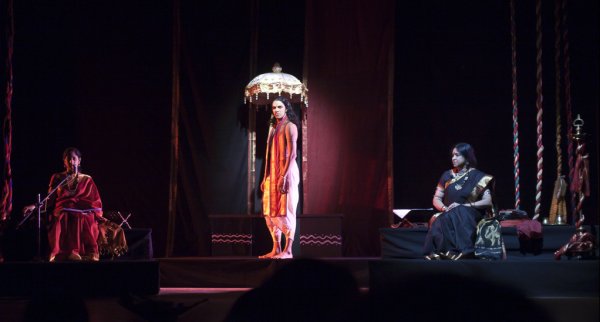
|   |

|   |
Sarpa Story! Lesser known legend from the Mahabaratha retold - Ashish Mohan Khokar, Bangalore e-mail: khokar1960@gmail.com March 9, 2011 Sutras are narratives based on the art of storytelling that encompasses time and space. These sutras originated in sattras, or seminaries, where any cult or ideology - Vaishnaivite or Vedic - blossomed and for centuries, these tales were told, ultimately becoming mythology and then, history. History was made on a fine day last season when in a setting that evoked memories of 1985, I saw Peter Brooks' Mahabaratha in Avignon, France. Sarpa Sutra was performed in similar magical setting in Chandralekha's property by the sea, now under the care of Sadanand Menon, by an able team of dancers and musicians and the sutradhar was the seasoned writer on arts and culture, Gowri Ramnarayan.   Krishna may be lovable but shorn of love of Radha, he creates much mischief in his grown-up years! Urged by fire god Agni (couldn't he think for himself?) he, with Arjuna, helps destroy forests (Khandwa) by burning it thereby destroying entire tribes of snakes and the king of snakes, Takshaka, then takes revenge by taking the life of Arjuna's grandson Parikshit. Janmejay, the son of Parikshit, then performs a huge ritual yagna to destroy the entire race of snakes. Serpent queen Jaratkaru begs son Astika to stop this genocide. Can he? Grown up Krishna is actually enfant terrible! Sheejith "Krishna" is absolutely appropriate for the role and he does so with aplomb!  JustUs Repertory is an amazing amalgam of dance, drama, music, costumes, sets. Each member looks committed and totally involved. In Gowri Ramnarayan's narration, there is drama and depth. Arun Kolatkar (1932-2004) distinguished himself as a graphic designer before taking to writing poetry full time. I travelled with him in Sweden when he was selected in 1987 for Festival of India and learnt much about Marathi theatre and bi-lingual writing from him. As I speak Tamil and Gurmukhi, Bangla and Hindi, I find cross-cultures very engaging. Gowri Ramnarayan's Sarpa Sutra should be seen to understand easily several contexts and issues that plague us presently: genocide, wars, social inequalities and gender issues. Add human greed, aforestation and environmental questions of the very survival of tribes and indigenous races. This dance-drama is a must-see for all sections and strata of society, worldwide. Ashish Mohan Khokar travels all over India and brings to note dancers of merit, through his writings, columns and yearbook, attendance. India's reputed and widely-read dance critic, his words help dancers and audiences understand and appreciate the art of dance and the actual performance, better. attendance-india.com / dancearchivesofindia.com |